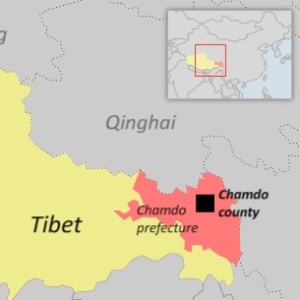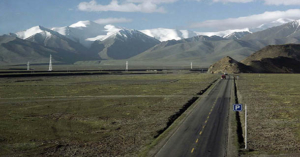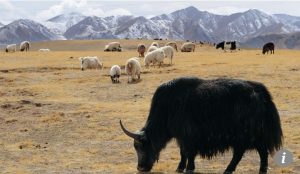Angry Response to White Paper
 By Dorji Kyi
By Dorji Kyi
China’s State Council Information Office published a White Paper entitled Ecological Progress on the Qinghai-Tibet Plateau on July 18, which claims that the Chinese government has always been mindful about environmental progress in Tibet and has made every effort to protect the environment. This claim has given rise to an angry response and claims by international experts that there is clear evidence to prove that China’s main goal is not to protect Tibet’s ecosystem but to promote their own economic development with little or no regard for the environment.
The Central Tibetan Administration (CTA) has responded to the White Paper, accusing China of, “Too many lies and factual errors”. Mr Zamlha Tempa Gyaltsen, an environmental research fellow at the Tibet Policy Institute has stated “the paper would have been a wonderful reading for someone who knows very little about Tibet, but for a regular observer, there are too many lies and factual errors. The paper states that ‘the Qinghai-Tibetan Plateau is one of the regions with the strictest water resource management and water environment protection in China’. There were too many cases of factories and mining companies who were not punished despite polluting local water bodies.”

Mr Gyaltsen also mentioned in his response that there are far too many contradictions between policies for environmental protection and actual ground implementation. He refers to the White Paper’s claim that “the relevant provinces and autonomous regions have taken active measure to increase public awareness of eco-conservation, such as strengthening public campaigns on environmental protection” and then notes an official circular issued by the Tibet Public Security Department of the Tibet Autonomous Region on February 7, 2018 which made environmental protection activities in Tibet an illegal act, thereby contradicting the claims made above.
The White Paper states that a system of protected natural areas has been set up to manage and protect biodiversity, preserve natural capital and maintain ecosystem services. However these claims can be contradicted by examining cases such as the mining in Zatoe. Atod and Zachen in Zotoe County are part of the Sangjiangyuan National Nature Reserve where Tibetan nomads who have lived and worked on the land, sustainably, for generations have been forcibly removed from their land by the Chinese government in the name of preservation and protection. Following the removal of the nomads, the Chinese government issued mining licenses in the area leading to a protest in August 2013 by around 4,500 people from the Zachen Yultso, Atod Yultso and Chiza Yultso nomadic communities of Zatoe.
“The recent White Paper on ecological progress in Tibet has nothing to do with facts or genuine promises but a pile of lies to cover their greed. Tibet’s ecosystem was perfect before China started mining, damming and polluting” said Dawa Dolma, the Environment Desk Officer of the Tibetan Women’s Association.
It is well documented that Tibetans have lived in harmony with nature for thousands of years – it is in their culture and religion to protect the environment. However, the environment is one of the biggest concerns being faced in Tibet today. Yet the new White Paper does not mention the Tibetan people or their concerns, including those most affected – the nomads.
The White Paper also fails to address the issues of natural disasters, the impact of climate change and the lack of firm policies for mining companies and others who are polluting Tibet’s ecosystem.
source:http://www.chinadaily.com.cn/a/201807/19/WS5b4fd51aa310796df4df752c.htmlhttp://tibet.net/2018/07/chinas-white-paper-on-tibets-ecology-too-many-lies-and-contradictions/https://tibetnature.net/en/buddhism-ecologically-sustainable-living/http://www.tibetanpoliticalreview.com/articles/homeofgodsandlandofrivershttp://tibet-edd.blogspot.com/2016/06/lichu-river-poisoned-case-of-minyak.htmlhttp://www.contactmagazine.net/articles/continuing-spotlight-mining-activities-zatoe/


comment 0